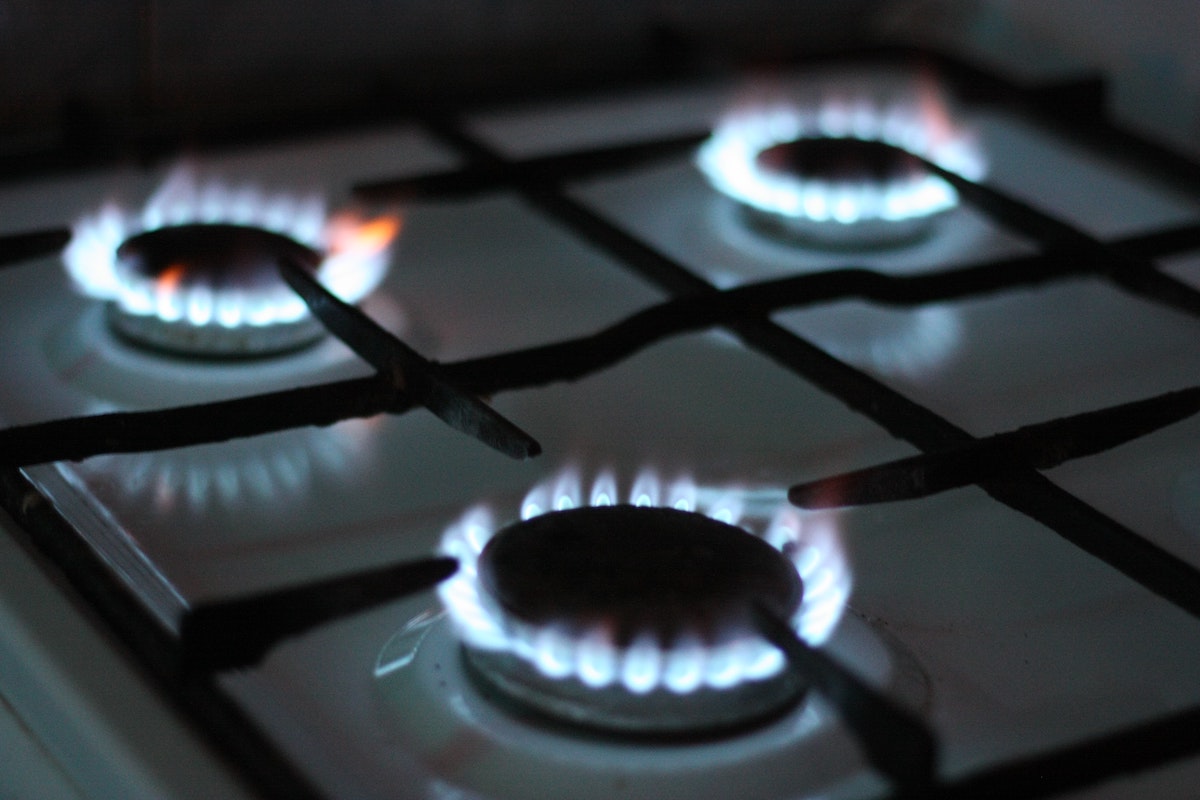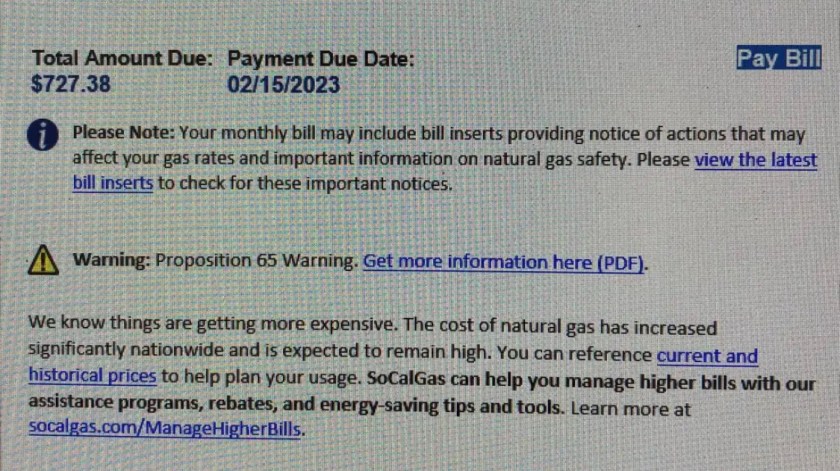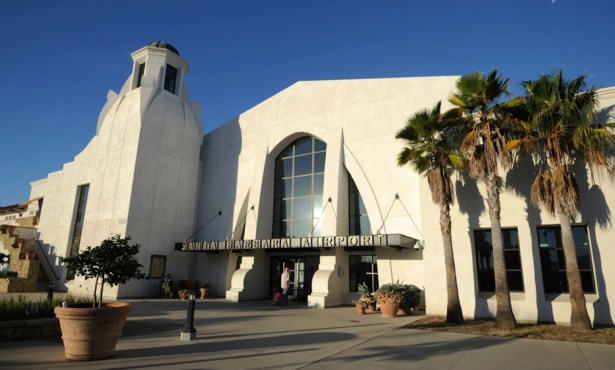Santa Barbara SoCalGas Customers Among Those to See Dramatic Drop in February Bill
Decreased Price of Natural Gas, Early Climate Credits Will Offer Some Relief to Residents Shocked by January Energy Bills

Many Santa Barbara County residents were in shock when they received their January gas bills this year, as unusually high increases in natural gas prices this winter took its financial toll across the state.
Partial relief may come this month with a decrease in gas prices and assistance from the Public Utilities Commission, but not before January’s bills could cause widespread upset.
Southern California Gas Company (SoCalGas), which practically has a monopoly on natural gas services in Santa Barbara, announced in a statement on January 31 that “market prices for natural gas have dropped,” meaning that a majority of SoCalGas customers will see a 68 percent decrease in their bill for February compared to January.
The company estimates that a $300 bill in January should go down to a $135 bill in February for the same usage. But while customers can expect a drop in costs, prices still remain higher than last year, when the average SoCalGas residential bill for February usage was $99. The company attributes the high costs for customers to higher wholesale prices.
In Santa Barbara County, residents have taken to social media platforms like Nextdoor to air their gas-price grievances. Many have said that their bills have doubled or tripled since December, even while their usage has remained the same or even decreased. Most claim their bills for January were anywhere between $200 and $600.
Celeste Barber, a retired Santa Barbara City College English teacher and resident of Hope Ranch, posted her whopping $727.38 bill on the platform, a particularly high sum for gas usage that was 100 therms lower than what her home used in 2022.

Barber explained that she lives in a home with her 94-year-old husband, who is greatly affected by the cold, but never had she seen such a dramatic increase in heating cost.
In response to the sudden rate increase, Barber wrote a letter to local and state representatives cosigned by 18 neighbors, calling the rate hike “unprecedented and devastating.”
“A utility necessary to life and livelihood — natural gas — is suddenly so high as to be prohibitively expensive for many,” the letter reads. It continues on to ask the addressed elected officials for acknowledgement, explanation, investigation, and remedy of the rate hikes.
Senator Monique Limón wrote back, saying “I, like you, have experienced this rate increase and share your concern.”
Limón directed Barber to resources for background information and assistance with the rate hikes, as well as mentioned an upcoming meeting of the California Public Utilities Commission (CPUC) to be held on February 7 to discuss high gas prices, examine possible drivers, and “explore potential measures to mitigate the the impact of natural gas and electric market volatility.”
Sign up for Indy Today to receive fresh news from Independent.com, in your inbox, every morning.
The price hikes have led to a widespread demand for action from many of the state’s residents and public officials, resulting in the CPUC offering an accelerated disbursement of California Climate Credits to residential energy customers to support those facing higher than normal energy bills.
In a statement released on Thursday, the CPUC said that it “ordered utilities to provide the Climate Credit to residential customers as soon as possible, rather than waiting until the scheduled month of April,” acting on an emergency motion of its Public Advocates Office filed on January 11.
The Climate Credit will be around $90 to $120, and “will automatically show up as soon as possible” on the bills of multiple gas companies, including SoCalGas, the CPUC said. Customers will not need to do anything to get the credit.
CPUC explained that the Climate Credit comes from a state program that requires energy industries that emit greenhouse gases to buy carbon pollution permits from auctions managed by the California Air Resources Board, and that the credit on the electricity bills of consumers represents the consumer’s share of the payments from the state’s program.
Usually, households receive it on their October or November and April or May bills each year, regardless of energy consumption or bill amount, they said. Commission members also took the opportunity to emphasize the need to reduce reliance on fossil fuels and use less energy.
“Natural gas prices throughout the West have risen to alarming levels this winter,” said CPUC President Alice Reynolds. “Advancing the California Climate Credit will provide immediate relief to California families struggling to pay their bills while we examine this critical issue and explore longer-term solutions to volatile natural gas prices.”
Natural gas prices have increased on the West Coast, but have fallen elsewhere across the United States and in Europe. West Coast costs have been attributed to a variety of factors, including below-normal temperatures, high demand for heating, reduced natural gas supplies and pipeline capacity, and low natural gas storage levels on the West Coast.
SoCalGas has said “it does not set the price for natural gas,” nor does it “profit from the movement of gas commodity prices.” The company also recently increased its contribution to the Gas Assistance Fund — a program that helps income-qualified customers pay their gas bills with a one-time $100 grant — to $1 million.
However, nonprofit group Consumer Watchdog sent a letter to Attorney General Rob Bonta in January calling on Bonta to investigate what the group called “red flags” in the situation, alleging there is evidence of SoCalGas colluding with their parent company, Sempra, to drive up prices.
“Southern California Gas’s curious failure to plan for winter left its customers with huge bills and its parent company SEMPA [sic] and its gas trading subsidiaries with huge profits,” said Jamie Court, president of Consumer Watchdog, in a January 18 press release. “The company owes the public answers and it is up to our public prosecutors to ask the key questions on their behalf.”
No matter the cause of the gas price hikes, customers’ wallets are still hurting. In addition to the early Climate Credits, consumers can learn more about their options for support through the Low Income Home Energy Assistance Program or through their home energy provider. In addition, SoCalGas is providing tips for managing higher bills and saving energy.
Support the Santa Barbara Independent through a long-term or a single contribution.




You must be logged in to post a comment.